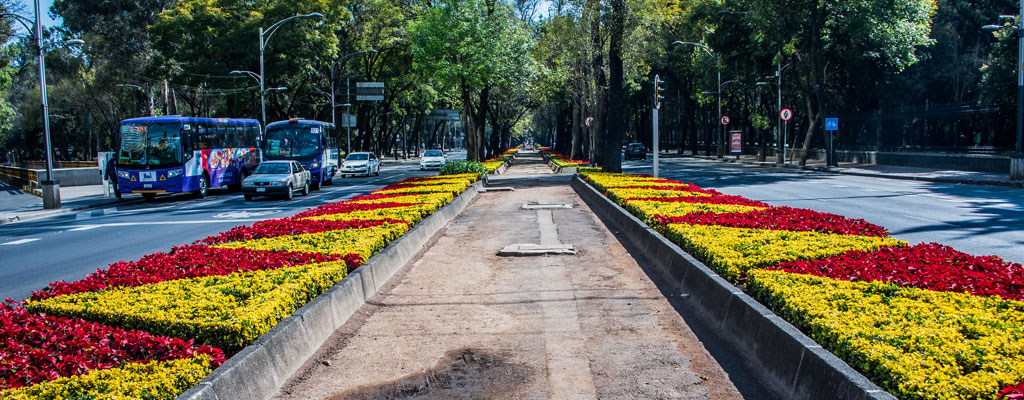
Mexico City has numerous streets with impressive buildings. We leave you 6 ideas so you can take a walk while admiring
Paseo de la Reforma
Traced by instruction of Emperor Maximiliano, the Paseo de la Reforma is the most emblematic of Mexico City. Its length is 14.7 km and the tour begins in the Bosque de Chapultepec, passes through the Ángel de la Independencia and ends near the streets of the Villa de Guadalupe. It is certainly the ideal place to take a walk and get to know the City.
Calle Francisco I. Madero
The Calle Francisco I. Madero is the access to the Plaza de la República and its connection with the Palacio de Bellas Artes. This street became a pedestrian promenade in 2010, which allows you to admire with calm the colonial buildings. Among its most prominent properties is the Torre Latinoamericana, which you can access to admire Mexico City from above.
Chimalistac
Secret and stately, the Chimalistac neighborhood is the ideal place to have a romantic walk or wander while you reflect. The Chimalistac origin is lost in time, but it is well known that it was refounded by Hernán Cortés next to Coyoacán. The buildings of this magical place were among the first to be made during the colonial period, when the area served as the capital of New Spain. Among the places that are recommended to visit is the Paseo del Río, la Iglesia de San Sebastian and the fuente del huerto.
Avenida Bucareli
Simply majestic, this street in the center of Mexico City was inaugurated by the Viceroy of New Spain Antonio María de Bucareli y Usúa. Its design was planned with the intention of modernizing the area and creating a recreation center. Although with the growth process of the colonia Juárez Bucareli, lost some of its roundabouts, the beauty of its architecture will leave you impressed.
Avenida Álvaro Obregón
Originally called Avenida Jalisco, this avenue of the colonia Roma was built at the beginning of the 20th century as a road to the Hacienda de la Condesa de Miravalle. Its extensive ridge is bounded by trees and ornamented with statues of Greek and Roman mythology. Álvaro Obregón is a reference of architectural beauties created during the Porfiriato, which house cultural centers, restaurants and centers for nightlife.
Amsterdam
The Avenida Amsterdam is popular for its particular oval shape that was once the race track of the former Hipódromo de la Condesa. In 1924 the racecourse closed its doors and the fractionation process turned the track into the pedestrian passage surrounded by trees that we currently know. The avenue was designed by Mexican architect José Luis Cuevas, who added Art Deco details that match many of the surrounding buildings.

